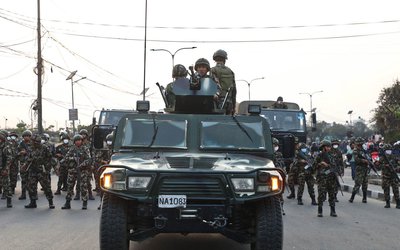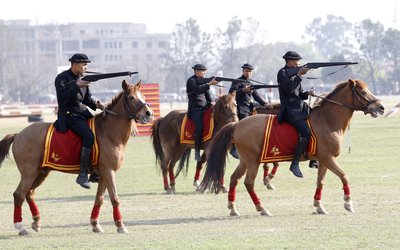Development agencies are often at the forefront of pioneering new approaches to global challenges. Their mission is to implement innovative solutions that address issues such as poverty, education, disasters, and health. Yet despite their focus on innovation, many of these agencies remain wedded to traditional methods. This tension between the old and the new can sometimes impede progress.
There are several reasons for this conservative approach. First, traditional methods are proven; they offer a level of predictability and security that new approaches cannot always guarantee. For example, while community-based programs and established frameworks are familiar and have a track record of success, integrating cutting-edge technology or novel methods often requires extensive piloting and validation.
Second, there is risk associated with innovation. Unproven methods may not always produce the desired results, and the stakes are high when dealing with vulnerable populations. As a result, development agencies may be reluctant to fully commit to new strategies without extensive evidence of their effectiveness.
Institutional inertia also plays an important role. Organizations often have entrenched processes and systems that are resistant to change. This resistance can be exacerbated by bureaucratic structures, lack of training, or insufficient resources to support innovative practices. While the desire to innovate is present, the practicalities of implementation can limit the extent to which agencies can move away from traditional approaches.
The evolution of government structures and development efforts in Nepal
Nepal's development journey has been marked by a long history of attempts to address its socioeconomic challenges. Over the past century, from the early periodic plans to the present, the government has established permanent institutions and technical resources in its 77 provinces.
The role of development agencies in Nepal has become more prominent since the restoration of democracy in 1990. The introduction of democratic governance opened new avenues for development, allowing for more direct involvement of international nongovernmental organizations (INGOs) and local partners. These agencies have brought additional resources and expertise to complement government efforts.
However, the notion of a "silver bullet"-a single, transformative solution-remains unrealistic. Development is inherently complex and incremental, requiring sustained effort and collaboration. The interplay between government structures and development agencies underscores the need for a synergistic approach in which both can leverage their strengths to achieve tangible results.
Comparing the expertise of INGOs and local partners
The expertise of INGOs and local partners can vary significantly, and this difference is often reflected in their compensation and benefits packages. INGOs typically employ professionals with extensive international experience and advanced degrees, which justifies their higher salary structures. These organizations often have access to larger budgets and international funding sources, allowing them to offer competitive compensation packages.
On the other hand, local partners may not always have the same level of formal expertise, but they have invaluable contextual knowledge and grassroots experience. Their compensation packages are often lower due to several factors, including limited funding, local economic conditions, and differing organizational priorities.
The pay gap raises important questions about equity and the value placed on local expertise. While INGOs bring specialized knowledge, local partners play a critical role in implementing projects on the ground. Their success in carrying out activities despite lower compensation is often due to their deep understanding of local dynamics, cultural nuances, and established relationships within communities.
Challenges of Field Implementation: Local Partners vs. INGOs
One of the stark contrasts between INGOs and local partners lies in their field implementation practices. INGOs typically have well-resourced units and departments, often equipped with vehicles and other logistical support. In contrast, local partners often operate with minimal resources, relying on two-wheelers and enduring challenging conditions such as torrential rains or dense fog.
This disparity in resources can affect the effectiveness of field operations. INGOs' well-funded infrastructure allows them to cover larger areas and manage logistics more efficiently. However, the resilience and adaptability of local partners is commendable. Their ability to navigate difficult conditions and reach remote areas despite limited resources demonstrates their commitment and ingenuity.
The effectiveness of local partners in field implementation underscores the need for a balanced approach. While INGOs provide essential financial and technical support, the presence and commitment of local partners on the ground are equally critical to the success of development projects. A collaborative model that leverages the strengths of both INGOs and local partners can lead to more effective and sustainable results.
Conclusion
The development landscape is characterized by a complex interplay of tradition and innovation, evolving government and agency roles, and varying levels of expertise and resource allocation. Understanding these dynamics is critical to improving the effectiveness of development efforts. By recognizing and addressing the challenges faced by both INGOs and local partners, stakeholders can foster more equitable and impactful collaboration, ultimately contributing to more meaningful and sustainable development outcomes.
In conclusion, recognizing these critical factors, a handful of development agencies and INGOs are strategically prioritizing their interventions with a focus on localization and ensuring equity with partners. They are emphasizing intersectionality and understanding grassroots power dynamics, aligning with shared visions and goals, and adding value to partners' initiatives. In addition, these organizations are committed to transparency and mutual accountability, while respecting the independence and autonomy of their partners. This approach not only promotes more effective and equitable collaboration, but also strengthens the overall impact of development efforts.
Bimal Khatiwada is Oxfam's Technical Coordinator for Disaster Risk Reduction and Resilience in Nepal.
- Localization: A Path To Socio-Economic Transformation In The Globalized World
- Mar 24, 2025
- Political Dimensions Of Localization In Humanitarian Discourse: Humanitarian Actions At Local By Regional Agencies
- Feb 11, 2025
- Sustainability In Development Projects: An Appraisal Of Nepal's Development Landscape
- Jan 19, 2025
- Saga of the Justice Reality: Work from Home with Remote Allowance
- Dec 05, 2024
- Climate Justice: A Global Call For Gender Equity In The Age Of Climate Change
- Nov 10, 2024














